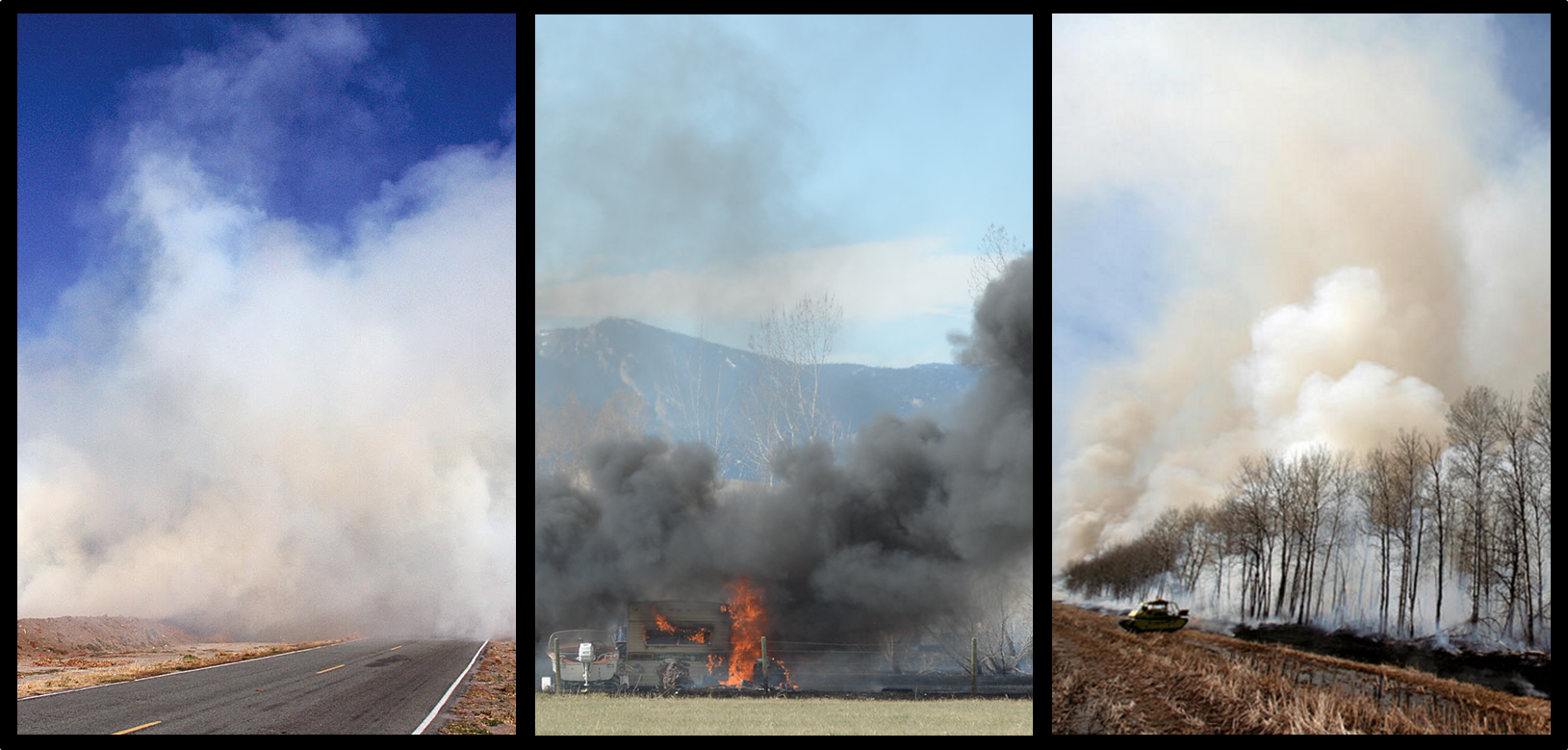Smoke is made up of particulates, aerosols and gases, and identifying the characteristics of each in a given smoke plume can be helpful when fighting fires. Reading smoke can tell a firefighter what is currently happening with a fire as well as what might happen in the future. One particularly important factor in predicting fire behavior is the color of the smoke emitted.

Smoke is the biproduct of the fuels it is burning. The color of the smoke indicates to firefighters the type and density of the fuels involved, all of which gives hints as to what the fire might do next.
White smoke can often mean material is off-gassing moisture and water vapor, meaning the fire is just starting to consume material. White smoke can also indicate light and flashy fuels such as grass or twigs.
Thick, black smoke indicates heavy fuels that are not being fully consumed. At times, black smoke can be an indicator that a manmade material is burning such as tires, vehicles or a structure. As a general rule, the darker the smoke, the more volatile the fire is.
Grey smoke can indicate that the fire is slowing down and running out of materials to burn.
![]()




7 Comments